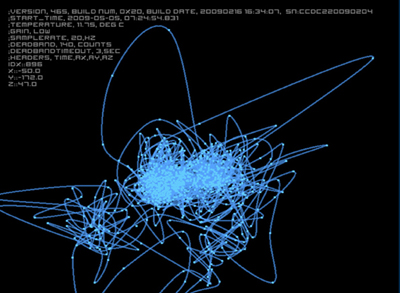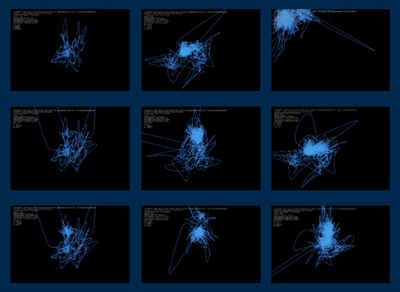James Geurts @Badgast
badgast | 2010-06-30 15:30:47
Tidal-Surf Drawing Project [T-SD Project] Drawing - in the Ocean Drawing
www.jamesgeurts.com
Locatie: BADGAST @ FAST aan de boulevard van Scheveningen bij de haven
Presentatie: 29 juli 2010 start 21.04
21.04 DEPARTURE FROM BADGAST TO THE BEACH
21.29 PART 1 'DRAWING HORIZON'
21.34 SUNSET
22.00 RETURN TO BADGAST FOR PART 2 'TIDAL SURF DRAWING PROJECT'
Satellietgroep and James Geurts, artist and surfer from Australia, kindly invite you for the presentation of his research @ BADGAST. Due to the particular moment of sunset we ask you to please arrive in time.
With special thanks to the FAST-community and EVA - Energie Voor Altijd - Henk Oldenkamp and Irene de Jong.
Following his residency @ BADGAST James will continue his research in de DCR-Gueststudio in The Hague during August.
"The Tidal-Surf Drawing Project is a series of spatial drawing works based on the ephemeral line created by the movement of the human body in the ocean. The work is created using a movement sensor device tracking the real-time coordinates of the surfing path in multidimentional space. I consider the qualities of the drawings and the act of surfing in terms of latent and actual processes of ephemeral Land-Art.
The Tidal-Surf Drawings are derived from the complex natural forces at the surf site, collecting sufficient data to produce fluid movement in the line, which is translated by custom-made software that renders variations in the drawings' shape, colour, light and texture. Factors influencing data include: tide, currents, wind, swell size, salt levels, chemical substances, temperature, beach gradation and wave height.
The locations for the Tidal-Surf drawing events so far are: Scheveningen Haven, (The Netherlands); San Diego; Venice Beach (California, USA) Ericeira Beach (Portugal) Porthmeor Beach (Cornwall, UK) Sandy Point (Victoria, Australia)."


Meer over surfen: zie deze website onder 'actueel': zomertentoonsteling in Muzee 'Gaan als ze er staan - over 40 jaar surfcultuur op Scheveningen'. Simone Knaapen - cultuursocioloog en Badgast in 2009 - heeft met Hans Groen en Ray Max voor Muzee Scheveningen de tentoonstelling samengesteld.
"Research and development for this project will take place during the Badgast artist residency at Satellietgroep, The Hague, Netherlands.
My work is based on an expanded field of drawing practice. The work that will proliferate from the experiments on site
may emerge through diverse forms of installation, video, land-art, kinetic sculpture, light works, sensor-drawing, photography, living-monochromes, sound and durational events. This practice inquires into the relationships between the spatial dynamics of human thought and movement, and the forces in nature.
To glimpse back to Rosalind Krauss's articulation of an 'expanded field' of artistic practice, Krauss argues that this field provides an expanded and finite set of related positions for a given artist to occupy and explore; for an organization of work that is not dictated by the conditions of a particular medium' (Krauss, 1979).
The T-SD Project specifically aligns patterns of human movement on water with circulating and interconnecting ocean currents as represented by the Oceanic Thermohaline Circulation System. I explore the sensory and critical potential of making the System visible through art, highlighting its geographic and metaphoric significance. The OTC System is set in motion when deep water forms in the North Atlantic, sinks, moves south, and circulates around Antarctica, before moving northward to the Indian, Pacific, and Atlantic basins, in a process that can take up to one thousand years.
Continuing on from the residency at Satellietgroep the works will be then made at 5 specific surf-sites touching the 5 principal oceans of the world, following the direct line of the OTC System’s closest contact with land. The large‐scale of the T-SD Project aims at a technical and aesthetic range that connects the complexity of global systems to the diversity of local conditions through the direct experience of the body in tidal zones.
My work contributes to the paradigms of eco-poetics and psychogeography, creating a view of the environment and the human as two interdependent circulatory systems. Bodies of water, weather cycles, conceptual systems and the human as a body of water are as much subjects in my work as the sense of circulation comes through methodologically and aesthetically in the formation of the expanded drawings. My works are combinational and connective. They are based on a type of research that is deliberate, intense and composite, and which activates the spaces of transformation that exist in the movement between landscape and thought."
“This analytical model - based on developmental pathways, dynamical interactions, singular points, and qualitative movements in abstract, sometimes multidimensional space – arguably furnishes a far richer theory of “site” than most currently employed in orthodox aesthetic or architectural practice. It would not be inappropriate to liken this approach to the artful shaping of a surfers trajectory on the sea. Unlike more traditional (hunter-warrior model) sports, surfers do not conceive of themselves as exclusive or “prime motors” at the origin of their movements: they rather track, from within the flows, a variety of emerging features, singularities, and unfoldings with which they can meld. This style of “soft” intervention–primarily perturbation or inflection–is certainly emerging today with increasing frequency in a variety of domains–art, politics, mathematics–through sports may well offer the most startling and salient examples of rigorous engagement with the surrounding milieu. As in surfing, the primary qualities are fluidity of movement, intuition (a quiet body harmoniously in step with its milieu– “in unity with the wave”), and innovation (rewriting the rulebook, exploring uncharted territory)”
The Complex and the Singular,
Sanford Kwinten, 2001
